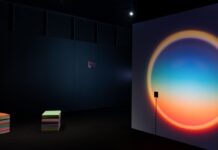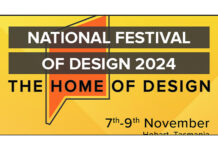At Cersaie 2014 in Bologna, Bisazza debuted several new collections, including the Bisazza Contemporary Cement Tiles collection, a new line featuring a contemporary, sophisticated interpretation of traditional cement tiles, typically used in the palaces and mansions of nobility and the privileged classes during the second half of the 1800s and early 1900s.
Made entirely by hand and available in two formats – 20cm x 20cm square or 20cm x 23cm hexagonal – each individual tile is unique. Meticulous craftsmanship adds allure and personality to the collection, which features a rich palette of colors and a sumptuous wealth of contemporary and classic graphic motifs that lend a bold, modern expressive identity to the range.
Eclectic and highly contemporary, these decorative cement tiles take on a completely modern look, thanks to the pairing of hexagonal and square geometric shapes that are deliberately imperfect and give each tile a bold personality. These playfully decorative motifs are available in a wide range of colors; they create unique patterns, similar to rugs, bringing a novel look to almost any surface. The graceful irregularity of the figures lends an element of surprise to the collection.
The signature decorative flair of Jaime Hayon is also found in this collection by the Spanish designer, with his fun-loving artistic language, creating very striking graphic designs which reflect the slightly “pop” style he has made his own.
The distinguishing element of the collection is the countless number of combinations possible that, depending on how the tiles are aligned, gives rise to a vast range of textures. Innovative material surfaces made up of unexpected geometric figures repeating to infinity, convey a sense of movement and create continuity between spaces.
This collection is a more classic inspiration (with a dash of the contemporary) for which Carlo Dal Bianco is renown. The designer’s goal was to recreate the luxurious patterns found in fabrics and revisit the designs found on tiles of days gone by. Traditional ornamental motifs are interpreted in new “high fashion” colors.
We’ve only included a few examples from each range here. For more information visit www.bisazza-australia.com.au





































